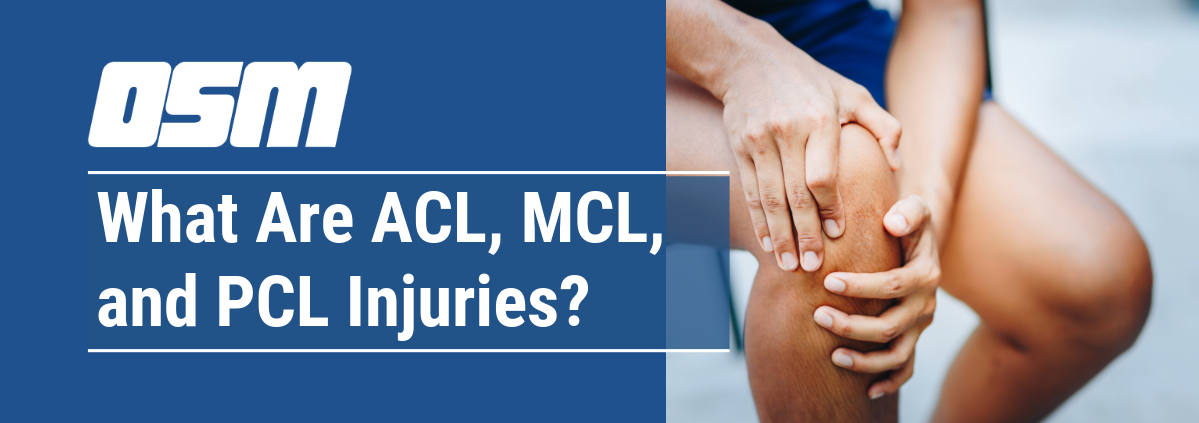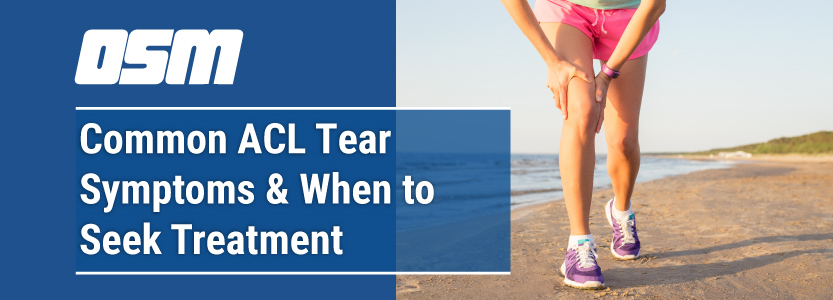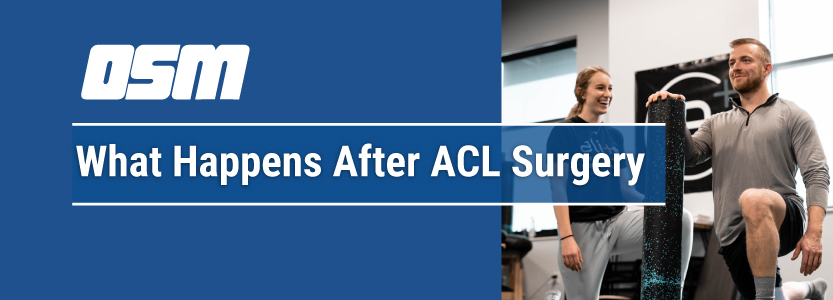What Are ACL, MCL, and PCL Injuries?
Article featured on Seattle Children’s Hospital
What are ACL, MCL and PCL injuries?
ACL, MCL and PCL injuries are damage to ligaments that keep the knee from wobbling or giving out when you move. These ligaments are the anterior cruciate ligament (ACL), medial collateral ligament (MCL) and posterior cruciate ligament (PCL). When the knee is forced into an unusual position, 1 or more of the ligaments can tear, either part way or all the way.
What are the symptoms of ACL, MCL and PCL injuries?
If the knee of a child, teen or young adult suddenly swells after an accident or injury, they may have a torn ACL, MCL or PCL or another serious knee problem. Other symptoms of knee ligament injuries include:
- A popping sound at the time of the injury
- Pain in the knee
- Knee is wobbly or unstable
How are ACL, MCL and PCL injuries diagnosed?
To help prevent further injuries to the bones and joints, it is important to get a thorough evaluation and proper treatment.
At our clinic, the doctor will:
- Ask what happened before the knee began to swell and hurt.
- Examine the knee. To doctors trained in sports medicine, knees with ACL, MCL or PCL tears often feel loose.
We cannot be sure that a knee ligament is torn until the swelling in the knee has gone down. This usually takes 7 to 10 days. At that time, we may take:
- X-rays of the knee to get more information on what is wrong
- An MRI if it is not clear that a ligament is torn or if we think there may be other injuries
How are ACL, MCL and PCL injuries treated?
Young people with a torn ACL need surgery to repair or reconstruct the ligament and then physical therapy (PT) to help them get back to their usual activities. If they are still growing, it’s important to receive care from a pediatric orthopedic surgeon who knows how to protect their .
For MCL and PCL injuries, we use nonsurgical methods like PT, including sports PT, whenever possible. Those who have an MCL injury may need to wear a hinged knee brace along with doing PT.
Surgery for ACL, MCL and PCL injuries
Surgery is the usual treatment after an ACL injury to make the knee stable again.
During ACL surgery, the surgeon replaces the torn ligament with new tissue that will turn into ligament over time. This tissue (called a graft) is taken from another body site and transferred to the new area. Graft tissue can be taken from the patient’s own body or from a donor (cadaver). The surgeon will talk with you in advance about the pros and cons of different types of grafts.
We drill small holes in the shinbone and the thighbone. Then, we pass the new ligament through the drill holes and secure it to the bones.
This surgery requires only small incisions. The surgeon inserts a small tool called an arthroscope into the knee. They use pictures displayed on a large monitor to guide their actions.
A young person who has both an MCL injury and an ACL injury probably will need surgery to reconstruct the ACL.
Surgery is not usually used to treat PCL injuries that happen by themselves. But surgery may be needed if:
- A PCL injury happens along with an injury to the ACL or another part of the knee.
- An injury moves the piece of bone the PCL is attached to far from its usual place on the shinbone. Surgeons can put the bone back and attach it again.
Physical therapy for ACL, MCL and PCL injuries
PT is an important part of getting better after surgery for any knee ligament injury. It will help strengthen the muscles around the knee and make the joint stable.
If an MCL or PCL injury is mild, a child, teen or young adult may be able to recover with PT alone. Our staff is expert at devising and teaching exercise programs to help patients:
- Recover range of motion
- Rebuild strength and stability
- Restore balance
- Regain confidence in using their knee
Most patients will have PT sessions with us a couple of times a week until they meet their goals for returning to their sport or other usual activities. Afterward, our therapists may also recommend exercises to keep doing at home.
To prevent new or repeat injuries, we have a strong focus on return-to-sport testing. Our PTs know how to check when a patient is ready to be more active or go back to their sport. We have done a great deal of research to understand how to make these decisions so each patient gets the best possible results.
One of the most important ways to prevent repeat injuries is to modify activities that might hurt the knee as it heals. These activities include high-level athletics that require:
- Jumping
- Pivoting
- Contact with other players
- Playing on an uneven surface
The Orthopedic & Sports Medicine Center of Oregon is an award-winning, board-certified orthopedic group located in downtown Portland Oregon. We utilize both surgical and nonsurgical means to treat musculoskeletal trauma, spine diseases, foot and ankle conditions, sports injuries, degenerative diseases, infections, tumors and congenital disorders.
Our mission is to return our patients back to pain-free mobility and full strength as quickly and painlessly as possible using both surgical and non-surgical orthopedic procedures.
Our expert physicians provide leading-edge, comprehensive care in the diagnosis and treatment of orthopedic conditions, including total joint replacement and sports medicine. We apply the latest state-of-the-art techniques in order to return our patients to their active lifestyle.
If you’re looking for compassionate, expert orthopedic and podiatric surgeons in Portland Oregon, contact OSM today.
Phone:
Address
1515 NW 18th Ave, 3rd Floor
Portland, OR 97209
Hours
Monday–Friday
8:00am – 4:30pm





